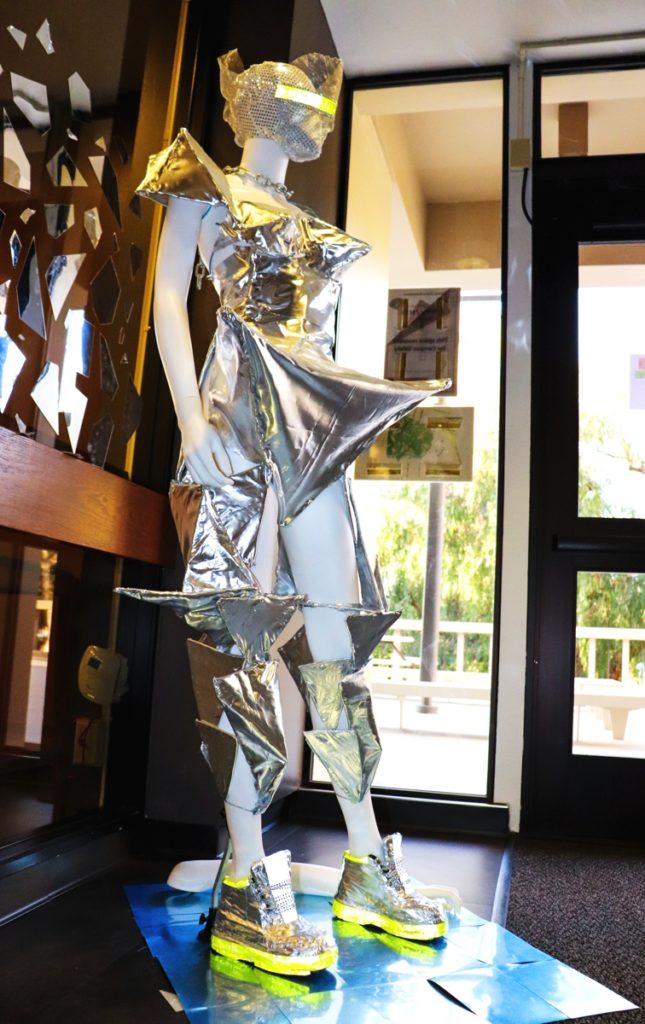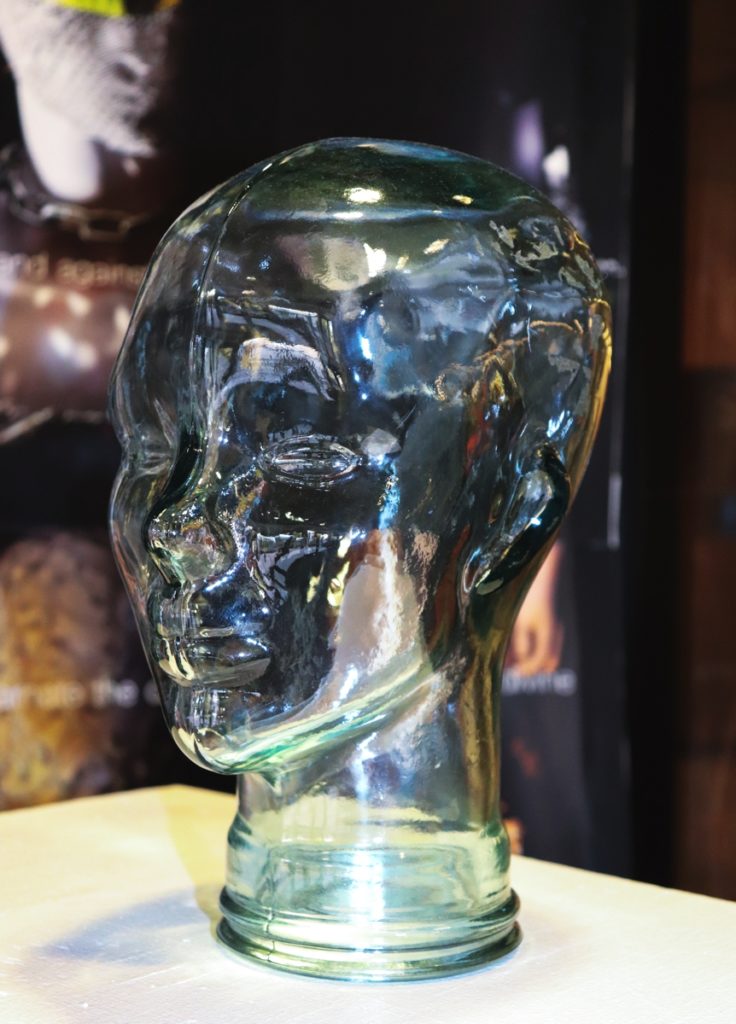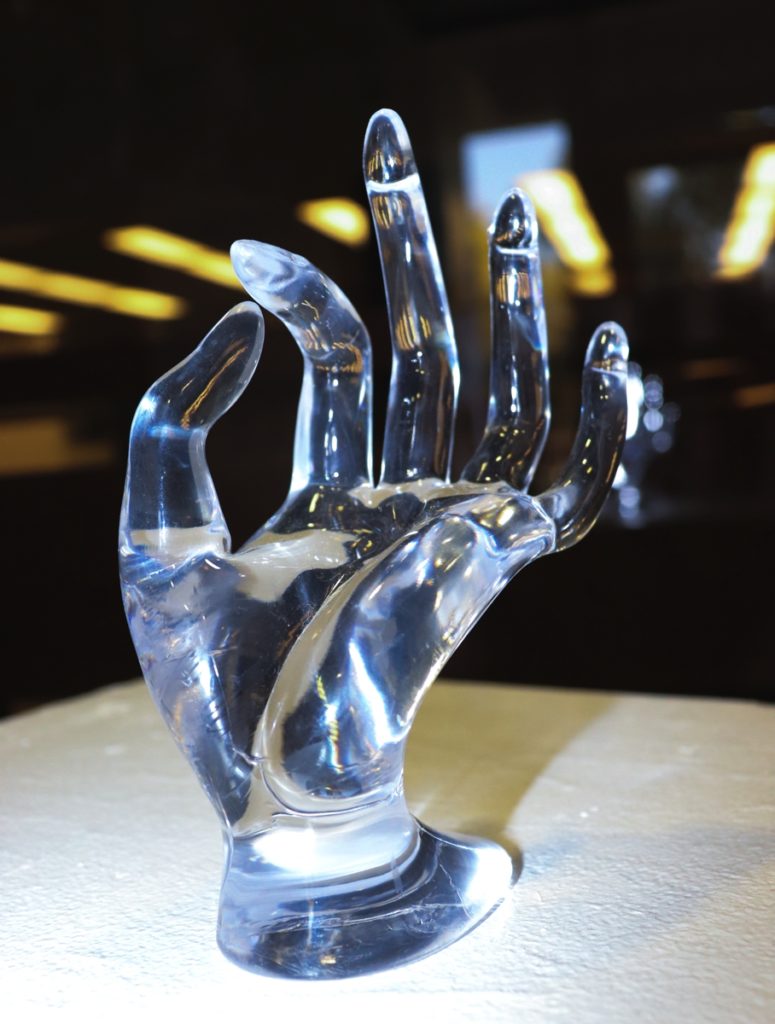
Sam Peck-Sanders (junior), Kendrick Shoji (junior) and Julian Strauss Biro (sophomore) collaborated through the Oxy Arts Initiate! program to create an exhibit titled “Ad(dressing) the Self: Consuming Meta-Goods through Fashion.” The exhibit was initially displayed in Weingart Galley. However, Strauss Biro explained that because the pieces received a considerable amount of attention and the trio hoped to display them for a longer period of time, the Academic Commons allowed them to move the exhibit Jan 26 to the entrance of the building, where it will remain indefinitely.
The team explained that “Ad(dressing) the Self” is a satirical exhibit designed to criticize society’s dependence on fashion to buy an identity.
“It’s kind of like a joke fashion line. It’s obvious this clothing is not to be worn. It’s kind of supposed to be super overly extravagant,” Shoji said. “The whole point is to satirize the relationship we have with clothing.”
Strauss Biro added that the project aims to address, and even poke fun at, how consumers use fashion brands to curate a specific branded image for themselves in an effort to remedy the sense of incompleteness they feel with respect to their identities.
“We are satirizing, in a way, fashion marketing and advertising and how, in a way, you’re advertising more than just the clothing, like an idea of a sense of self. You’re buying an identity or a sense of self through this clothing, which is kind of a way we felt fashion ads work,” Strauss Biro said.

According to Shoji, this project was inspired by a class project for a Media Arts & Culture course called “Narrative Design and Worldbuilding.” Shoji and Struass Biro said that they were inspired by by Peck-Sanders’ concept and encouraged her to continue the project after the course finished; Shoji and Strauss suggested they work together and the three applied for a grant from Oxy Initiate!
“In a culture increasingly concerned with the public aestheticization of lifestyles, I thought about how this paradigm might actually apply to how we conceive of or try to “problem-solve” the human condition … I wanted to create an aesthetic language that drew upon pop culture currency prevalent in fashion and its representation in media in order to explore and satirize this phenomenon,” Peck-Sanders said via email.
Oxy Arts Production Manager Andrew Lia said the student artists sent in their proposal through the Oxy Arts Initiate! program and were selected for a stipend and a chance to follow through with their proposal.
“If we could support them in any way and kind of keep their interest in the arts and their creativity going, that’s kind of what’s at the core of Oxy Arts,” Lia said.

Strauss Biro said they used their stipend from Oxy Arts Initiate! for materials such as fabrics, wires, mannequins and poster-printing in order to create three designs: the celestial piece, the perennial piece and the digital piece. The celestial piece features a silver and green sequined gown draped over a mannequin surrounded by small votive candles. The perennial piece, in contrast, is a silver, geometric garment accessorized with a sequined, neon yellow headpiece, matching sneakers and a chainlink necklace.The digital piece, a clear mannequin head and posed hand, sits adjacent to the other two works. She added that these designs were time-consuming; the team worked at least three to four days a week for a month. Toward the last two weeks of the project, they worked on the pieces every day for five hours a night.
“It’s definitely like our group’s child in a way, ” Shoji said.
According to Strauss Biro, their team always ran everything by each other and relied on each other, as this was their first experience with fashion.
“We worked on it a ton. All three of us are creative, artistic people, but none of us really had any experience making these sculptural pieces and stuff like that. So it was a really big kind of learning curve, but we put a lot of work into it and we’re happy with how it turned out,” Strauss Biro said.
Lia also noticed the cohesiveness of the team and thought it was an integral part of making a successful project.
“They always seemed on the same page. It was three people functioning as one so they were able to install it on time,” Lia said.
Shoji said their next steps are to find different studios and places to take their exhibit to and to make a website to document this project.
“I feel like I can do anything now. That was really hard, but I did something that I’m pretty proud of and it was cool. It honestly just showed what we as a group are capable and it’s just fun. Anyone can learn anything if you just try hard enough,” Shoji said.
![]()


































